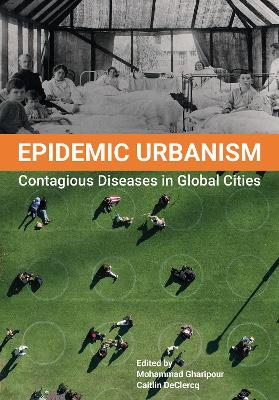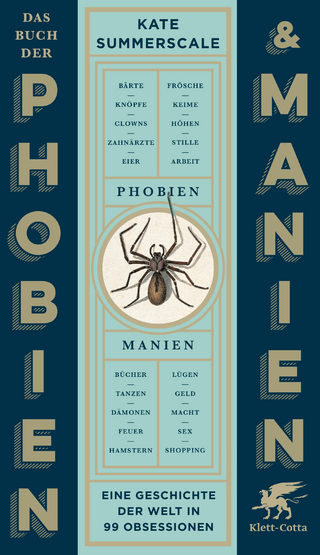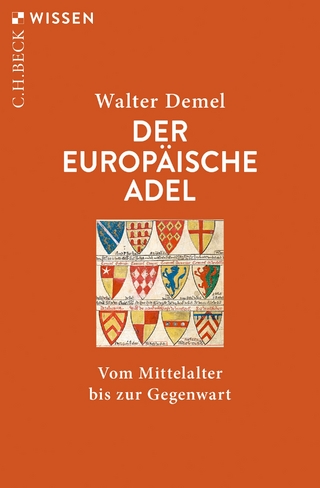
Epidemic Urbanism
Intellect Books (Verlag)
978-1-78938-470-3 (ISBN)
Includes 36 chapters that deploy interdisciplinary approaches to the analysis of the mutual relationship between pandemics and the built environment. The chapters share the story of a pandemic in a particular city or region from five continents, and are organized in four sections to convey the mechanisms of change that affect vulnerabilities and responses to epidemic illnesses: 'Urban Governance', 'Urban Life', 'Urban Infrastructure' and 'Urban Design and Planning'. Two prominent scholars from the disciplines of public health and medical anthropology provide a prologue and epilogue: Sandro Galea writes on 'Pandemics and urban health', and Richard J. Jackson on 'Urbanism and architecture in the post-COVID era'.
The contributors to this new study are historians, public health experts, art and architectural historians, sociologists, anthropologists, doctors and nurses. In researching their contributions, all have spoken to an audience that includes the public, practitioners and academic readers; the resultant case studies reveal a diverse range of urban interventions that are connected to the impact of epidemics on society and urban life, as well as the conceptualization of and response to disease.
Epidemic illnesses – not only a product of biology, but also social and cultural phenomena – are as old as cities themselves. The recent pandemic has put into perspective the impact of epidemic illness on urban life and exposed the vulnerabilities of the societies it ravages as much as the bodies it infects. How can epidemics help us understand urban environments? How might insights from the outbreak and responses to previous urban epidemics inform our understanding of the current world? With these questions in mind, this book gathers scholarship from a range of disciplines to present case studies from across the globe, each demonstrating how cities in particular are not just the primary place of exposure and quarantine, but also the site and instrument of intervention.
This book seeks to explore the profound and complex ways that architecture and landscape design were impacted by historical epidemics around the world, from North America to Africa and Australia, and to convey this information in a way that meaningfully engages a public readership. The chapters analyse the development of urban infrastructure, institutions and spaces in western and eastern societies in response to historical pandemics. They also demonstrate how epidemic illnesses, and their responses, exploit and amplify social inequality in the urban contexts and communities they impact.
Mohammad Gharipour is professor and director of the Architecture Graduate Program at the School of Architecture and Planning at Morgan State University in Baltimore, USA. Caitlin DeClercq is an assistant director at Columbia University’s Center for Teaching and Learning. Along with Mohammad Gharipour, she is the co-founder of the Epidemic Urbanism Initiative.
Preface – Mohammad Gharipour and Caitlin DeClercq
Prologue: Pandemics and urban health – Sandro Galea
PART 1: URBAN GOVERNANCE: POLITICS AND MANAGEMENT
1. Plague in Sibiu and the first quarantine plan in Central Europe, 1510 – Katalin Szende and Ottó Gecser
2. Mughal governance, mobility, and responses to the plague in Agra, India, 1618–19 – Mehreen Chida-Razvi
3. Urban governance, economic intervention, and the plague in Bristol, England, 1665–66 – Andrew Wells
4. Smallpox and the specter of Mexican citizenship, 1826 – Farren Yero
5. Complacency, confusion, and the mismanagement of cholera in York, England, 1832 – Ann-Marie Akehurst
6. Cholera, the Roman aqueduct, and urban renewal in Naples, Italy, 1860–1914 – Sofia Greaves
7. The contested governance of border railways and the plague of Northeast China, 1910–11 – Yongming Chen and Yishen Chen
8. Print, politics, and the smallpox epidemic in Terre Haute, USA, 1902–3 – Allen Shotwell
9. Colonialism, racism, and the government response to bubonic plague in Nairobi, Kenya, 1895–1910 – Catherine Odari
PART 2: URBAN LIFE: CULTURE AND SOCIETY
10. Women, social solidarities, and the plague in 17th-century Newcastle, England – Rachel Clamp
11. The Jewish ghetto as a space of quarantine in Prague, 1713 – Joshua Teplitsky
12. Hygiene and urban life in the 'District of Death' in 19th-century Istanbul – Fezanur Karaağaçlıoğlu
13. Religious rituals and cholera in the shrine cities of 19th-century Iran – Fuchsia Hart
14. Social life, illness, and the marketplace in Kumasi, Ghana, from the 20th century to the present – George Osei and Shobana Shankar
15. The city as field hospital and the influenza epidemic in Seattle, USA, 1918–19 – Louisa Iarocci
16. Rural migrants, smallpox, and civic surgery in 20th-century Baghdad, Iraq – Huma Gupta
17. House, social Life, and smallpox in Kathmandu, Nepal, 1963 – Susan Heydon
18. Meningitis, shared environments, and inequality in São Paulo, Brazil, 1971–75 – Daniela Sandler
PART 3: URBAN INFRASTRUCTURE: PERMANENCE AND CHANGE
19. Epidemics and the royal control of public health in Lisbon, Portugal, 1480–95 – Danielle Abdon
20. The Guadalquivir River and plague in Seville, Spain, in the 16th century – Kristy Wilson Bowers
21. Social inequity and hospital infrastructure in the City of Puebla, Mexico, 1737 – Juan Luis Burke
22. Colonial infrastructure, ecology, and epidemics in Dhaka, 1858–1947 – Mohammad Hossain
23. South American health conventions, social stratification, and the Ilha Grande Lazaretto in Brazil, 1886 – Niuxa Dias Drago, Ana Paula Polizzo, and Fernando Delgado
24. Plague, displacement, and ecological disruption in Bombay, India, 1896 – Emily Webster
25. French urbanism, Vietnamese resistance, and the plague in Hanoi, Vietnam, 1885–1910 – Michael Vann
26. Building a community on Leprosy Island in the Philippines, 1898–1941 – Mary Anne Alabanza Akers
27. Shifting health paradigms and infrastructure in Australia in the 20th century – Karen Daws and Julie Willis
PART 4: URBAN DESIGN AND PLANNING: INTERVENTIONS AND IMPLICATIONS
28. Urban design, social epidemiology, and the bubonic plague of Palermo, Italy, 1575–76 – Carlo Trombino
29. Cholera and housing reform in Victorian London, England, 1850–1900 – Irina Davidovici
30. Public health, urban development, and cholera in Tokyo, Japan, 1877–95 – Susan L. Burns
31. The Hong Kong plague and public parks in the British settlements of Shanghai and Tianjin, China, 1894 – Yichi Zhang
32. Rebuilding the British Seamen’s Hospital at Smyrna in the wake of smallpox and cholera epidemics, 1892 – Işılay Tiarnagh Sheridan Gün and Erdem Erten
33. Spatial change and the cholera epidemic in Manila, the Philippines, 1902–4 – Ian Morley
34. Plague, housing, and battles over segregation in colonial Dakar, Senegal, 1914 – Gregory Valdespino
35. Urban transformation and public health policies in post-influenza Lagos, Nigeria, 1918 – Timothy Oluseyi Odeyale
36. Urban landscape transformations and the malaria control scheme in Mauritius, 1948–51 – Nicole de Lalouvière
Epilogue: Post-COVID urbanism and architecture – Richard J. Jackson
Glossary
Bibliography
Authors’ biographies
Index
| Erscheinungsdatum | 20.12.2021 |
|---|---|
| Zusatzinfo | 28 Maps; 50 Plates, color; 75 Halftones, black and white |
| Sprache | englisch |
| Maße | 170 x 244 mm |
| Themenwelt | Geschichte ► Teilgebiete der Geschichte ► Kulturgeschichte |
| Naturwissenschaften ► Geowissenschaften ► Geografie / Kartografie | |
| Technik ► Architektur | |
| ISBN-10 | 1-78938-470-2 / 1789384702 |
| ISBN-13 | 978-1-78938-470-3 / 9781789384703 |
| Zustand | Neuware |
| Haben Sie eine Frage zum Produkt? |
aus dem Bereich


